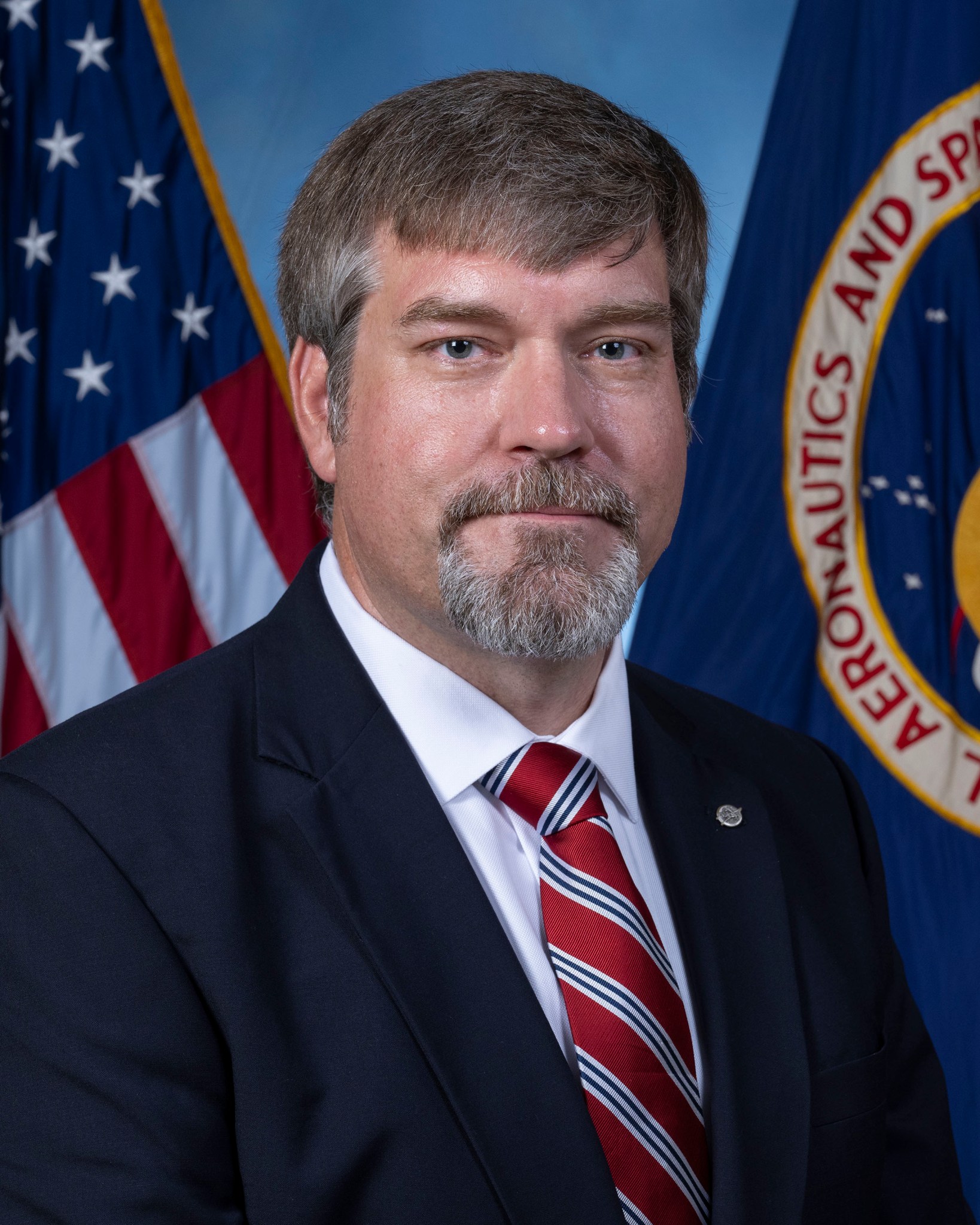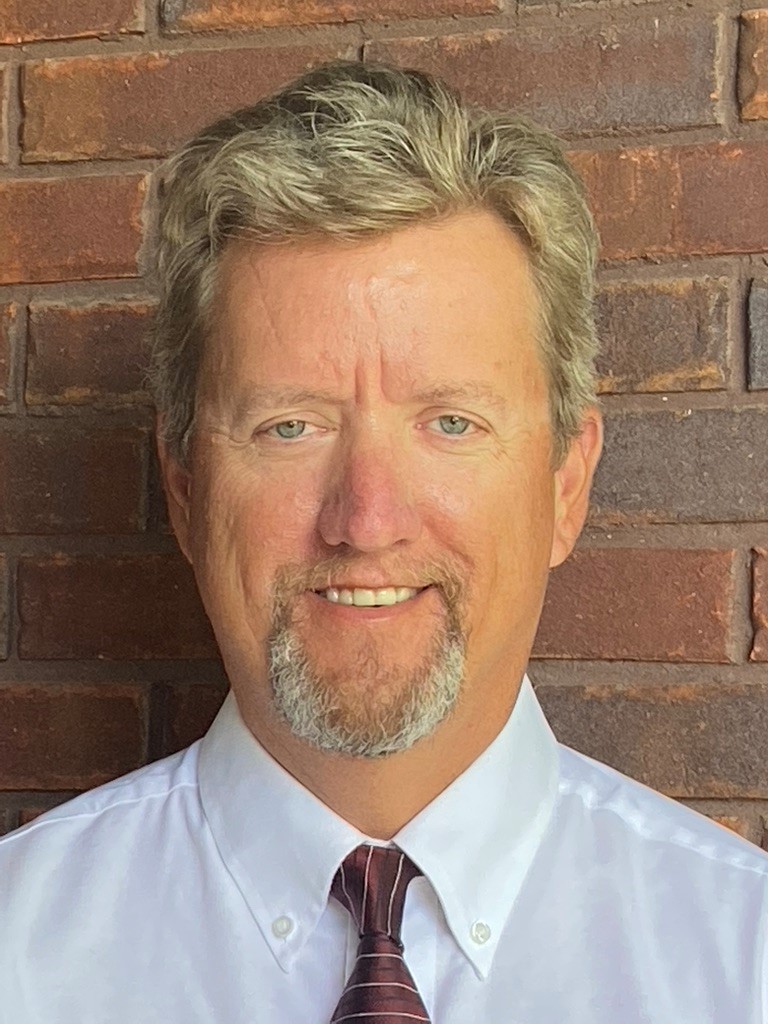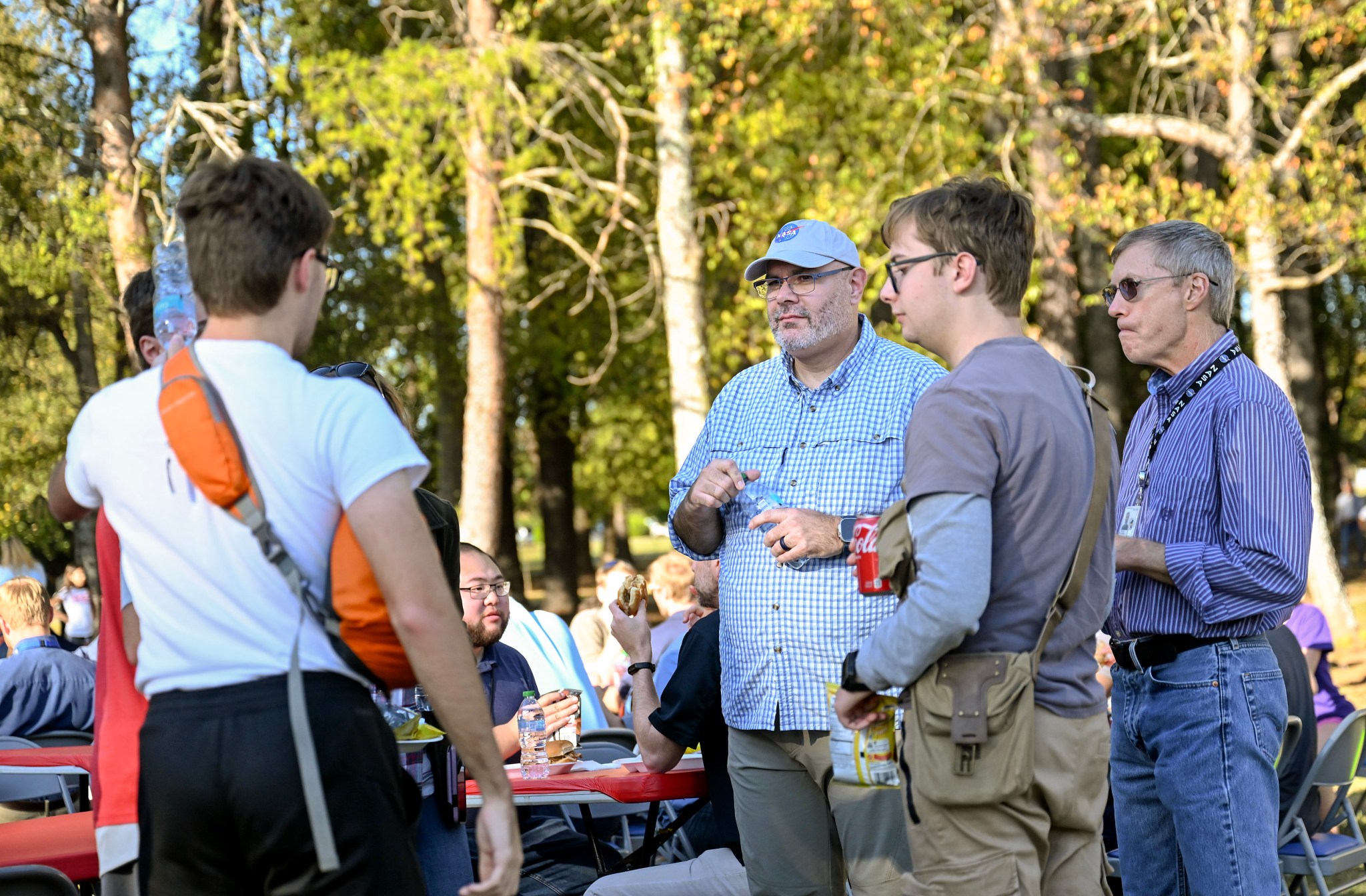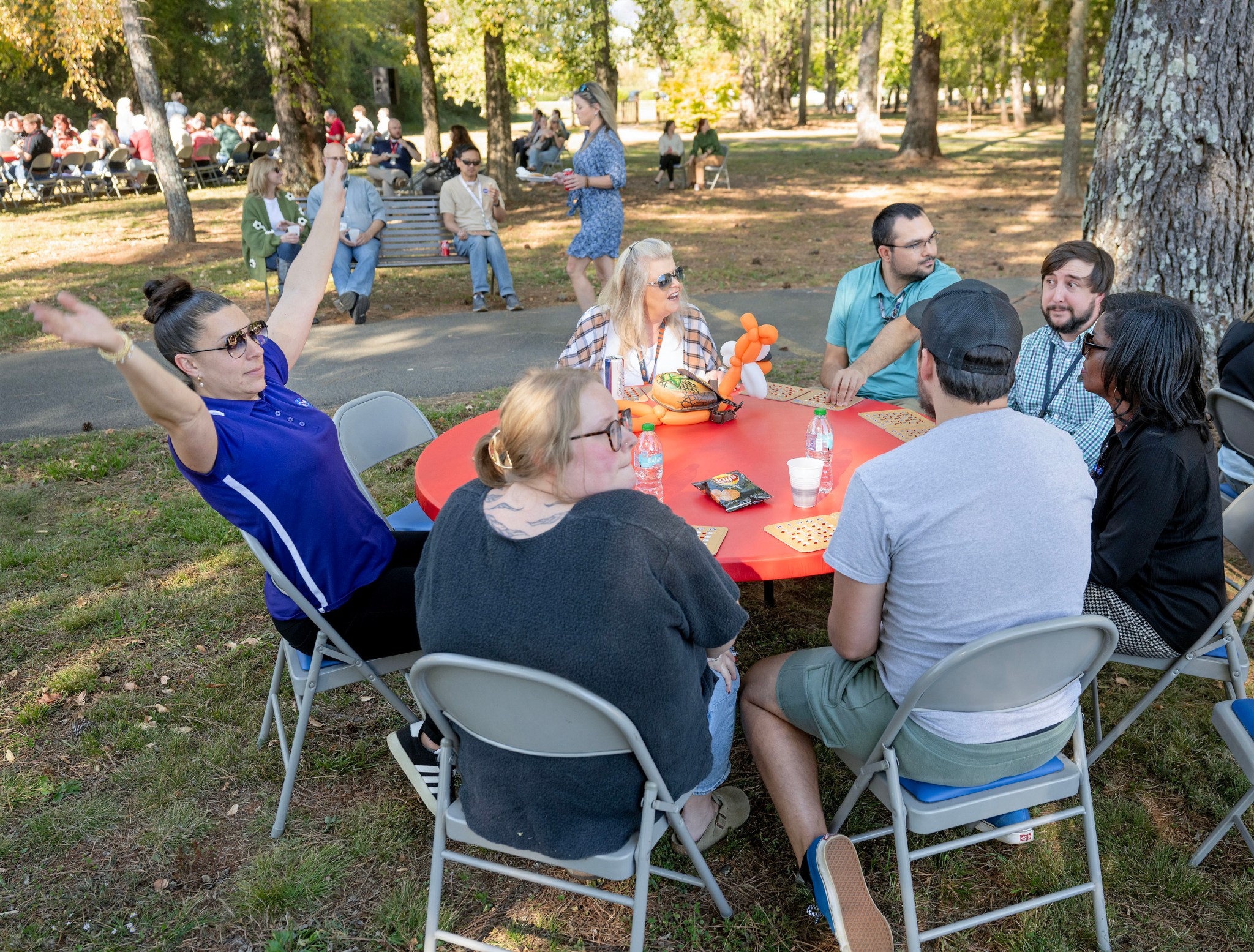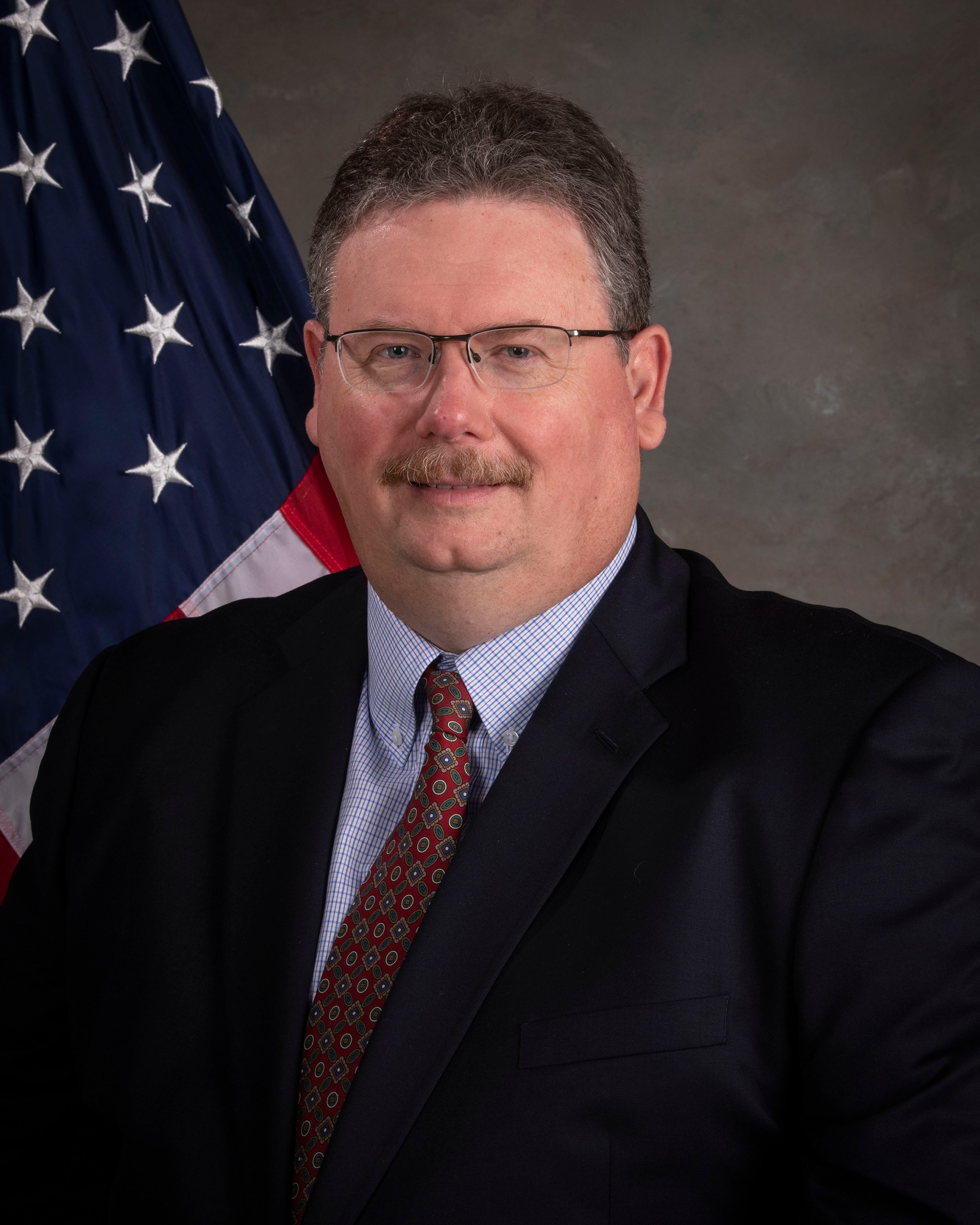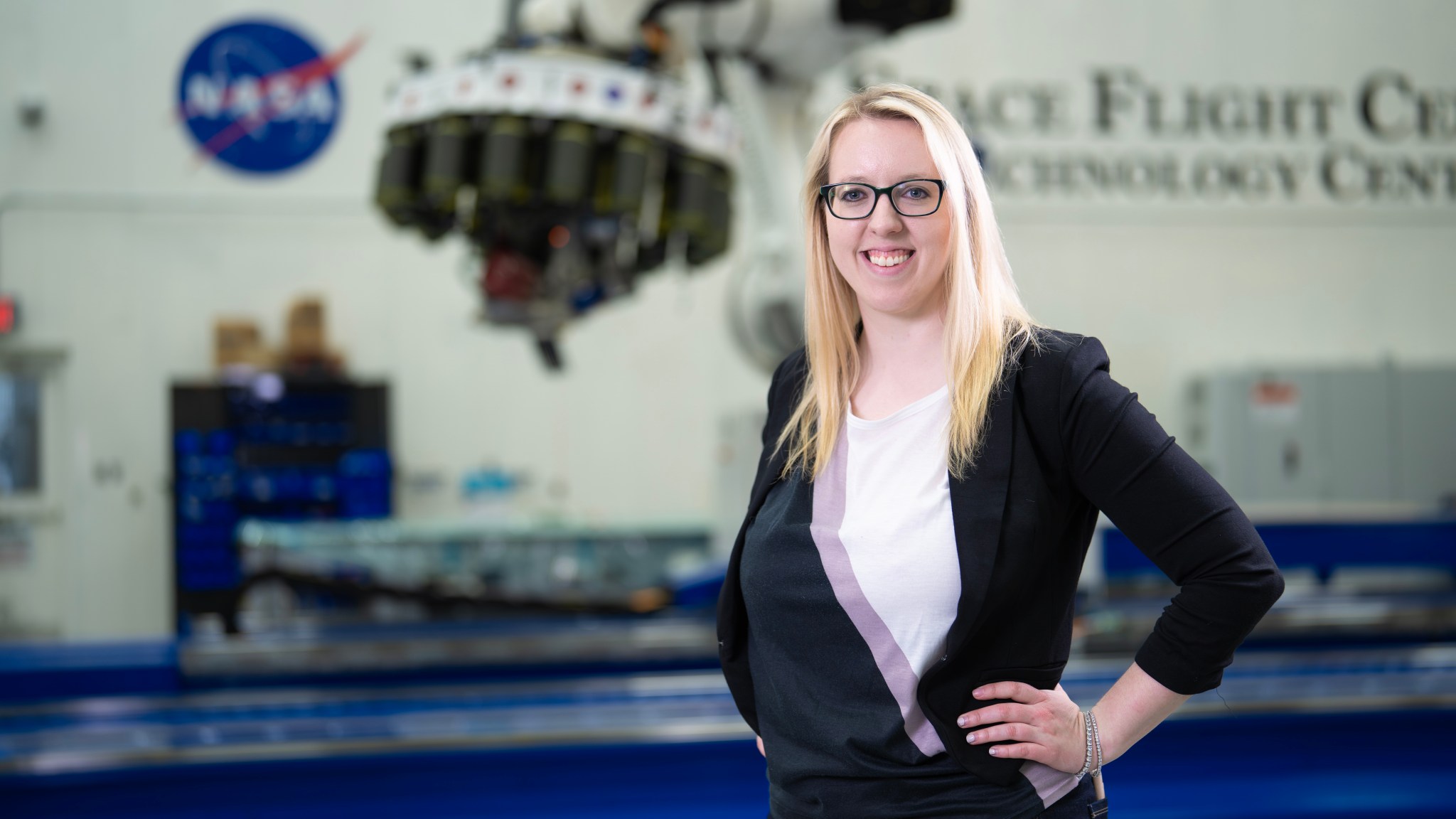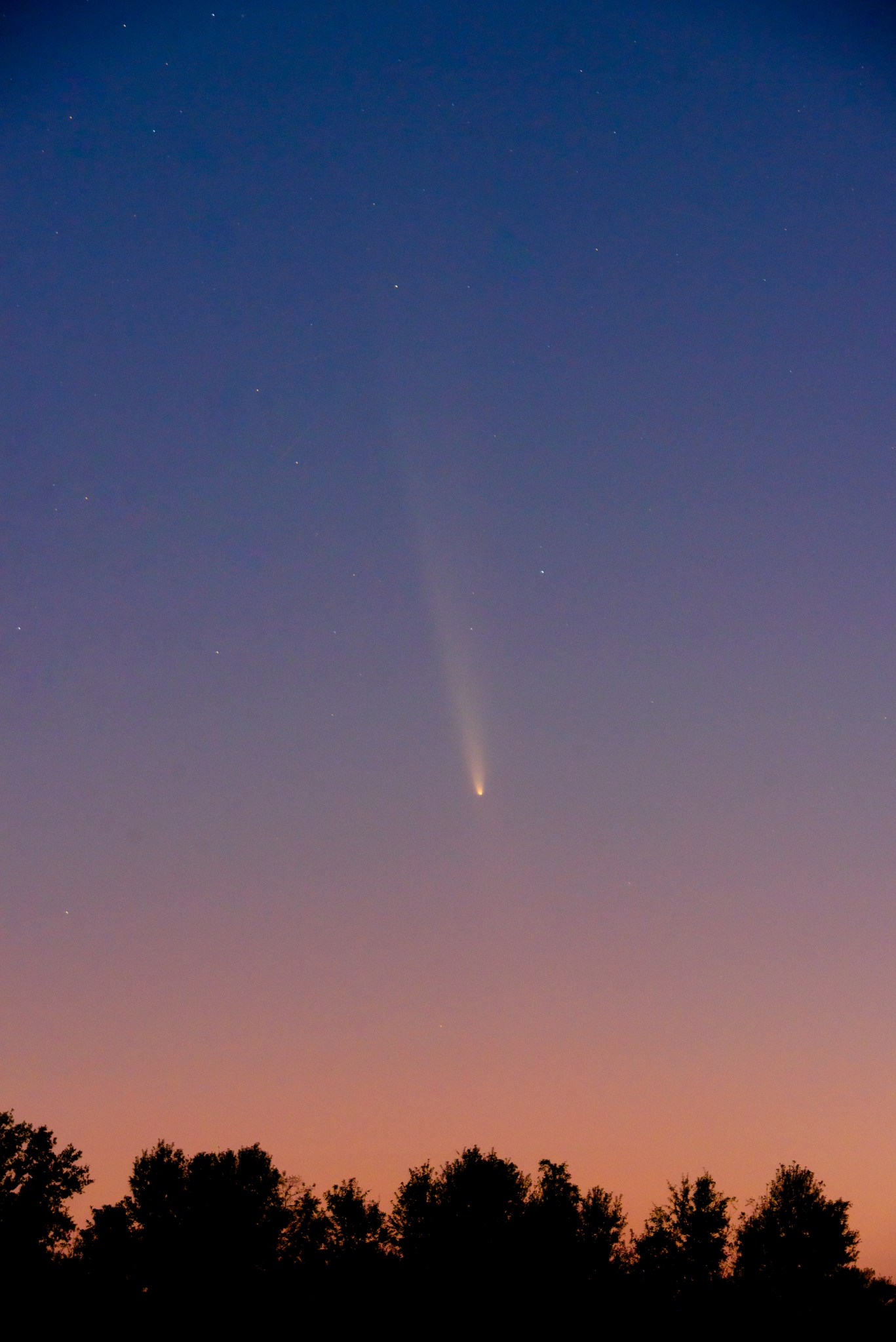Editor’s Note: Starting Nov. 4, the Office of Communications at NASA’s Marshall Space Flight Center will no longer publish the Marshall Star on nasa.gov. The last public issue will be Oct. 30. To continue reading Marshall news, visit nasa.gov/marshall.
Habitation Systems Business Unit Spotlight: Living and Working in Space
For centuries, humans have dreamed of the ability to live safely on the Moon and Mars. At NASA’s Marshall Space Flight Center, team members supporting habitation systems development bring that dream closer to reality by envisioning and shaping humanity’s future in deep space and on the surface of other worlds.
Marshall’s Habitation Systems business unit – the center’s featured organization for October – develops the next generation of habitation systems to make living and working in space and on planetary bodies possible. These efforts are carried out through the Habitation Systems Development Office, in which the team works across programmatic and engineering organizations to support formulation activities for planetary surface habitation (Moon and Mars), transit habitats for deep space exploration, and the Gateway program. In addition, the Marshall team collaborates with commercial partners on future habitation concept development and risk reduction activities through NextSTEP Appendix A: Habitation Systems and Reimbursable Space Act Agreements.
Seth Bell is currently the technical monitor for NASA’s commercial partner Sierra Space. Sierra has executed both full scale and subscale inflatable habitat burst tests at Marshall’s East Test Area. Bell has worked as a subsystem manager for the Mars Ascent Vehicle and as a system’s engineer and Engineering Directorate integrator.
“I am excited to eventually see softgood inflatables in low Earth orbit,” Bell said. “Seeing the success of the many teams working in this office is exciting, especially after developing so many lasting relationships and putting so much time and energy into this work.”
Since joining NASA in 2008, Yancy Young has served in multiple positions, including manager of several International Space Station research projects and Launch Package manager for Gateway Co-manifested Payloads. Currently, Young is the technical monitor for Boeing efforts under NASA’s NextSTEP Appendix A Broad Agency Announcement (BAA) for the development of deep space habitation concepts.
“I love being a part of laying the foundation for long term deep space exploration,” Young said.
Boeing’s current focus is a Design Analysis Cycle investigating the benefits and challenges of using composite materials in a pressurized Lunar Surface Habitat.
In her 25-plus years at NASA, Brooke Thornton has worked on everything from ionized space radiation analysis to Earth observing satellites. Currently, Thornton is the industry engagement manager for the Habitation Systems Development Office and Strategy and Architecture Office. Thornton manages NextSTEP-2 Appendix A-Habitation Systems and Appendix R-Logistics and Mobility Systems BAA. In addition, Thornton fosters collaboration between industry and NASA for the Moon to Mars mission.
“I am excited about working with industry to develop the elements and concepts of operations for humans to live on the Moon and beyond,” Thornton said.
Team Members Enjoy Marshall Exchange BBQ Fest
Joseph Pelfrey, center, director of NASA’s Marshall Space Flight Center, talks with team members during the BBQ Fest hosted by the Marshall Exchange on Oct. 21. The event was held on the walking trail behind the Wellness Center and was open to team members, their family members, and retirees. “My thanks to those who came out to this year’s BBQ – and especially to those who helped make it happen,” Pelfrey said. “I could not have asked for better weather or a better group of people to spend the afternoon with. It was great to see everyone’s families join us on site to celebrate the hard work our teams have put in this year.” (NASA/Charles Beason)
Children play on an inflatable at the BBQ Fest with a space shuttle inflatable in the background. (NASA/Charles Beason)
Marshall team members participate in Bingo during the BBQ hosted by the Marshall Exchange. (NASA/Charles Beason)
Tony Clark Named Deputy Director of Marshall’s Engineering Directorate
Tony Clark has been named to the Senior Executive Service position of deputy director of the Engineering Directorate at NASA’s Marshall Space Flight Center, effective immediately. In this role, Clark will be help lead the center’s largest organization, comprised of more than 2,500 civil service and contractor personnel, who design, test, evaluate, and operate flight hardware and software associated with Marshall-developed space transportation and spacecraft systems, science instruments, and payloads.
Clark previously served as deputy director of the Space Systems Department at Marshall from 2021-2024 and served as acting director in 2024. In this role, Clark led the design, development, assembly, integration, testing, and delivery of flight, ground, prototype, and development products for NASA human spaceflight programs, science investigations, and exploration initiatives. He aided in the oversight of an annual budget of approximately $70 million and helped manage a diverse, highly technical workforce of approximately 660 civil service employees and contractors.
Over his three decades of service to NASA, Clark has held numerous key leadership roles, bringing a wealth of technical and supervisory experience to Marshall’s broad range of engineering endeavors. He served as manager of the vehicle equipment area in Johnson Space Center’s Vehicle Systems Integration Office of the Gateway Program from 2018-2021. He was also manager of the Engineering Resource Management Office in Marshall’s Engineering Directorate from 2014-2018, tasked with leading and coordinating resources among eight engineering departments, laboratories and offices staffed by more than 2,300 civil service and contract personnel.
He was acting deputy manager of the Engineering Directorate’s Spacecraft and Vehicle Systems Department from February 2014 to October 2014. Prior to that, Clark was chief of the directorate’s Electrical Integration and Fabrication Division from 2007-2014, and chief of the Electromagnetic Environmental Effects and Electrical Integration Branch from 2004-2007. He joined Marshall in September 1991 as an electromagnetic environmental effects engineer.
Clark earned a bachelor’s degree in electrical engineering from Tennessee Technological University in Cookeville in 1989 and a master’s degree in electrical engineering from The Ohio State University in Columbus in 1991.
Among his many professional awards and honors, Clark received the NASA Exceptional Achievement Medal in 2010 for his work on the Ares IX, the launch vehicle which informed development of NASA’s new rocket, the Space Launch System. He also received a Silver Snoopy award in 1999, reflecting outstanding service and the highest dedication to safe human spaceflight.
Clark was a founding member in 2004 of the Huntsville Chapter of the Institute of Electrical and Electronic Engineers’ Electromagnetic Compatibility Society.
I Am Artemis: Sarah Ryan
A passion for puzzles, problem-solving, and propulsion led Sarah Ryan – a native of Columbus, Ohio – to her current position as Raptor engine lead for NASA’s HLS (Human Landing System) insight team at NASA’s Marshall Space Flight Center. The SpaceX Raptor rocket engine powers the company’s Starship and Super Heavy rocket. SpaceX will land astronauts on the Moon for NASA’s Artemis III and Artemis IV missions using the Starship HLS. NASA’s Artemis campaign aims to land the first woman, first person of color, and first international partner astronaut on the Moon.
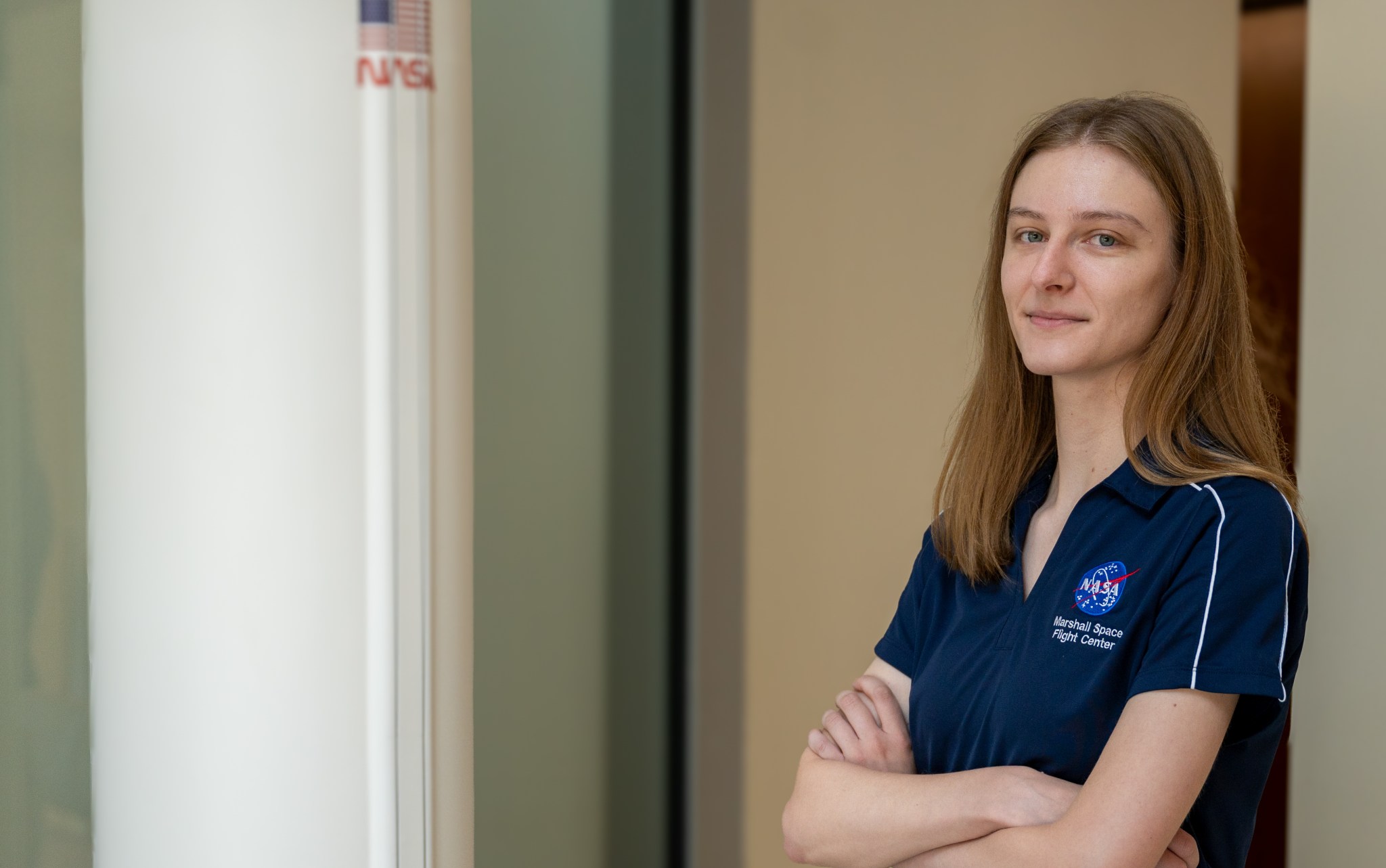
“My team looks at how the components of the Raptor engine work together. Then, we evaluate the performance of the full system to make sure it will accomplish the NASA HLS and Artemis missions,” Ryan said. “I get to see lots of pieces and parts of the puzzle and then look at the system as a whole to make sure it meets NASA’s needs.”
While earning a bachelor’s degree from Case Western Reserve University in Cleveland with a dual major in aerospace engineering and mechanical engineering, Ryan had an internship at Marshall, working on a payload for a science mission onboard the International Space Station.
After working for a year on satellite design, Ryan returned to Marshall. She noted that the opportunity to work in Marshall’s Engine Systems branch, to be involved with pushing technology forward, and to work on Artemis, really drew her back to NASA. Ryan later earned a master’s degree in aerospace systems from the University of Alabama in Huntsville.
When not occupied with rocket engine development, Ryan likes to work on quieter hobbies in her free time, including reading, board games, crocheting, and solving all manner of puzzles – crosswords, number games, word games, and more. Her interest for solving puzzles carries over into her work on the Raptor rocket engines for HLS.
“My favorite tasks are the ones that most resemble a puzzle,” Ryan said. “If we’re investigating an issue and have a lot of information to assess, I love putting all the pieces together and figuring out what happened, why, and the path forward. I enjoy digging into the data and solving those puzzles.”
With Artemis, NASA will explore more of the Moon than ever before, learn how to live and work away from home, and prepare for future human exploration of Mars. NASA’s SLS (Space Launch System) rocket, exploration ground systems, and Orion spacecraft, along with the HLS, next-generation spacesuits, Gateway lunar space station, and future rovers are NASA’s foundation for deep space exploration.
I Am Artemis: Casey Wolfe
While precision, perseverance, and engineering are necessary skills in building a Moon rocket, Casey Wolfe knows that one of the most important aspects for the job is teamwork.
“Engineering is vital, but to get this type of work done, you need to take care of the human element,” said Wolfe, the assistant branch chief of the advanced manufacturing branch in the Materials and Processes Laboratory at NASA’s Marshall Space Flight Center.
Together with her team, Wolfe is developing and producing the next generation payload adapter for NASA’s SLS (Space Launch System) super-heavy lift rocket. The adapter is made with some of the world’s most advanced composite manufacturing techniques.
Wolfe’s work integrates the technical day-to-day operations and personnel management of the composites manufacturing team and additive manufacturing team, balancing production of SLS hardware with the creation of new engines using the latest manufacturing technologies.
“A lot of my day to day is in managing our two teams, making connections, building relationships, and making sure people feel supported,” Wolfe said. “I conduct individual tag ups with each team member so we can be proactive about anticipating and addressing problems.”
Wolfe grew up in Huntsville, a place known as the “Rocket City,” but it wasn’t until she visited a job fair while studying at Auburn University for a polymer and fiber engineering degree that she began to consider a career at Marshall. Wolfe applied for and was selected to be a NASA intern through the Pathways Program, working in the non-metallic materials branch of the Materials and Processes Laboratory.
Wolfe supported a coating system for electrostatic discharge on the first uncrewed test flight of the Orion spacecraft. Launching Dec. 5, 2014, Orion traveled to an altitude of 3,600 miles, orbited Earth twice, and splashed down in the Pacific Ocean. It was during her internship that Wolfe realized how inspirational it felt to be treated like a vital part of a team.
“The SLS program gave everyone permission to sign the hardware, even me – even though I was just an intern,” Wolfe said. “It was impactful to me, knowing that something I had worked on had my name on it and went to space.”
Since being hired by NASA, Wolfe’s work has supported development of the Orion stage adapter diaphragms for Artemis II and Artemis III, and the payload adapters for Artemis IV and beyond. The first three Artemis flights use the SLS Block 1 rocket variant, which can send more than 27 metric tons (59,500 pounds) to the Moon in a single launch. Beginning with Artemis IV, the SLS Block 1B variant will use the new, more powerful exploration upper stage to enable more ambitious missions to deep space, with the cone-shaped payload adapter situated atop the rocket’s exploration upper stage. The new variant will be capable of launching more than 38 metric tons (84,000 pounds) to the Moon in a single launch.
“While the engineering development unit of the payload adapter is undergoing large-scale testing, our team is working on the production of the qualification article, which will also be tested,” Wolfe said. “Flight components should be starting fabrication in the next six months.”
When Wolfe isn’t working, she enjoys hiking, gardening, and hanging out with her dogs and large family. Recently, she signed another piece of SLS hardware headed to space: the Orion stage adapter for the second Artemis mission.
With as many responsibilities as Wolfe juggles, it’s easy to lose sight of her work’s impact. “I work in the lab around the hardware all the time, and in many ways, it can become very rote,” she said.
But Wolfe won’t forget what she saw one evening when she worked late: “Everybody was gone, and as I walked past the launch vehicle stage adapter, there were two security guards taking pictures of each other in front of it. It was one of those things that made me step back and reflect on what my team accomplishes every day: making history happen.”
NASA is working to land the first woman, first person of color, and its first international partner astronaut on the Moon under Artemis. SLS is part of NASA’s backbone for deep space exploration, along with the Orion spacecraft, supporting ground systems, advanced spacesuits and rovers, the Gateway in orbit around the Moon, and commercial human landing systems. SLS is the only rocket that can send Orion, astronauts, and supplies to the Moon in a single launch.
NASA’s IXPE Helps Researchers Determine Shape of Black Hole Corona
By Rick Smith
New findings using data from NASA’s IXPE (Imaging X-ray Polarimetry Explorer) mission offer unprecedented insight into the shape and nature of a structure important to black holes called a corona.
A corona is a shifting plasma region that is part of the flow of matter onto a black hole, about which scientists have only a theoretical understanding. The new results reveal the corona’s shape for the first time, and may aid scientists’ understanding of the corona’s role in feeding and sustaining black holes.
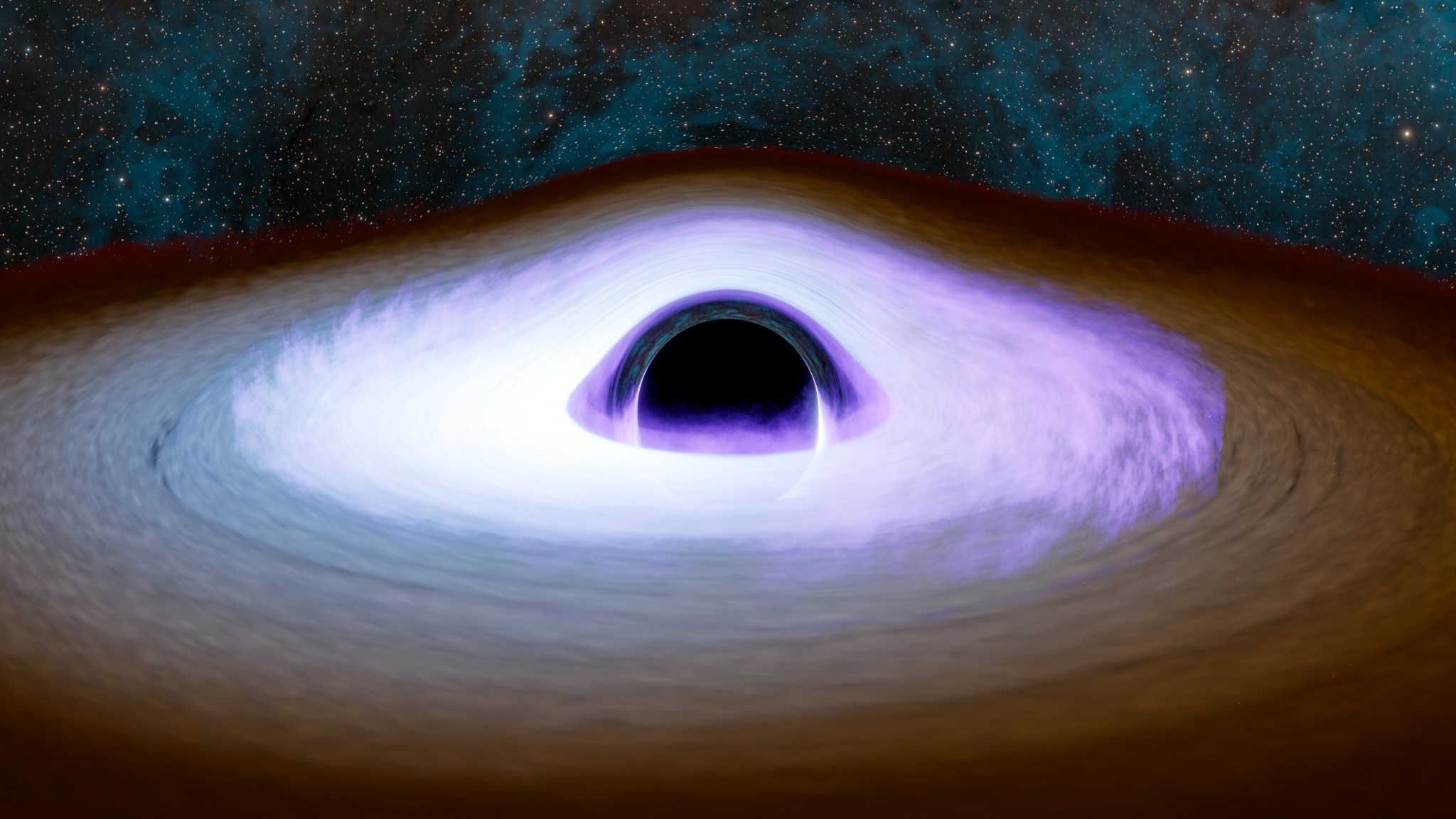
Many black holes, so named because not even light can escape their titanic gravity, are surrounded by accretion disks, debris-cluttered whirlpools of gas. Some black holes also have relativistic jets – ultra-powerful outbursts of matter hurled into space at high speed by black holes that are actively eating material in their surroundings.
Less well known, perhaps, is that snacking black holes, much like Earth’s Sun and other stars, also possess a superheated corona. While the Sun’s corona, which is the star’s outermost atmosphere, burns at roughly 1.8 million degrees Fahrenheit, the temperature of a black hole corona is estimated at billions of degrees.
Astrophysicists previously identified coronae among stellar-mass black holes – those formed by a star’s collapse – and supermassive black holes such as the one at the heart of the Milky Way galaxy.
“Scientists have long speculated on the makeup and geometry of the corona,” said Lynne Saade, a postdoctoral researcher at NASA’s Marshall Space Flight Center and lead author of the new findings. “Is it a sphere above and below the black hole, or an atmosphere generated by the accretion disk, or perhaps plasma located at the base of the jets?”
Enter IXPE, which specializes in X-ray polarization, the characteristic of light that helps map the shape and structure of even the most powerful energy sources, illuminating their inner workings even when the objects are too small, bright, or distant to see directly. Just as we can safely observe the Sun’s corona during a total solar eclipse, IXPE provides the means to clearly study the black hole’s accretion geometry, or the shape and structure of its accretion disk and related structures, including the corona.
“X-ray polarization provides a new way to examine black hole accretion geometry,” Saade said. “If the accretion geometry of black holes is similar regardless of mass, we expect the same to be true of their polarization properties.”
IXPE demonstrated that, among all black holes for which coronal properties could be directly measured via polarization, the corona was found to be extended in the same direction as the accretion disk – providing, for the first time, clues to the corona’s shape and clear evidence of its relationship to the accretion disk. The results rule out the possibility that the corona is shaped like a lamppost hovering over the disk.
The research team studied data from IXPE’s observations of 12 black holes, among them Cygnus X-1 and Cygnus X-3, stellar-mass binary black hole systems about 7,000 and 37,000 light-years from Earth, respectively, and LMC X-1 and LMC X-3, stellar-mass black holes in the Large Magellanic Cloud more than 165,000 light-years away. IXPE also observed a number of supermassive black holes, including the one at the center of the Circinus galaxy, 13 million light-years from Earth, and those in galaxies NGC 1068 and NGC 4151, 47 million light-years away and nearly 62 million light-years away, respectively.
Stellar mass black holes typically have a mass roughly 10 to 30 times that of Earth’s Sun, whereas supermassive black holes may have a mass that is millions to tens of billions of times larger. Despite these vast differences in scale, IXPE data suggests both types of black holes create accretion disks of similar geometry.
That’s surprising, said Marshall astrophysicist Philip Kaaret, principal investigator for the IXPE mission, because the way the two types are fed is completely different.
“Stellar-mass black holes rip mass from their companion stars, whereas supermassive black holes devour everything around them,” he said. “Yet the accretion mechanism functions much the same way.”
That’s an exciting prospect, Saade said, because it suggests that studies of stellar-mass black holes – typically much closer to Earth than their much more massive cousins – can help shed new light on properties of supermassive black holes as well. The team next hopes to make additional examinations of both types.
Saade anticipates there’s much more to glean from X-ray studies of these behemoths. “IXPE has provided the first opportunity in a long time for X-ray astronomy to reveal the underlying processes of accretion and unlock new findings about black holes,” she said.
The complete findings are available in the latest issue of The Astrophysical Journal.
Smith, an Aeyon employee, supports the Marshall Office of Communications.
Michoud Gets a Rare Visitor
The Oort Cloud comet, called C/2023 A3 Tsuchinshan-ATLAS, passes over Southeast Louisiana near New Orleans, home of NASA’s Michoud Assembly Facility on Oct. 13. The comet is making its first appearance in documented human history; it was last seen in the night sky 80,000 years ago. The Tsuchinshan-ATLAS comet made its first close pass by Earth in mid-October and will remain visible to viewers in the Northern Hemisphere just between the star Arcturus and planet Venus through early November. Eric Bordelon, a photographer for Michoud, captured the image, which was featured as NASA’s image of the day. “On Sunday evening I decided to head out to find the comet I’ve read so much about,” Bordelon said. “Struggling at first to see it, once my eyes adjusted to the darkness I could faintly see it. I pulled my camera out and set up a tripod, with a longer exposure around six seconds I was able to capture this shot with a single frame. The far off setting sun made a beautiful color gradient in the dark sky with the other stars just beginning to appear.” Read more about the comet. (NASA/Eric Bordelon)
Hubble Captures New View of Galaxy M90
A new NASA/ESA Hubble Space Telescope image features the striking spiral galaxy Messier 90 (M90, also NGC 4569), located in the constellation Virgo. In 2019, Hubble released an image of M90 created with Wide Field and Planetary Camera 2 (WFPC2) data taken in 1994, soon after its installation. That WFPC2 image has a distinctive stair-step pattern due to the layout of its sensors. Wide Field Camera 3 (WFC3) replaced WFPC2 in 2009 and Hubble used WFC3 when it turned its aperture to Messier 90 again in 2019 and 2023. That data resulted in this stunning new image, providing a much fuller view of the galaxy’s dusty disk, its gaseous halo, and its bright core.
The inner regions of M90’s disk are sites of star formation, seen here in red H-alpha light from nebulae. M90 sits among the galaxies of the relatively nearby Virgo Cluster, and its orbit took M90 on a path near the cluster’s center about three hundred million years ago. The density of gas in the inner cluster weighed on M90 like a strong headwind, stripping enormous quantities of gas from the galaxy and creating the diffuse halo we see around it. This gas is no longer available to form new stars in M90, with the spiral galaxy eventually fading as a result.
M90 is located 55 million light-years from Earth, but it’s one of the very few galaxies getting closer to us. Its orbit through the Virgo cluster has accelerated so much that M90 is in the process of escaping the cluster entirely. By happenstance, it’s moving in our direction. Astronomers have measured other galaxies in the Virgo cluster at similar speeds, but in the opposite direction. As M90 continues to move toward us over billions of years, it will also be evolving into a lenticular galaxy.




























